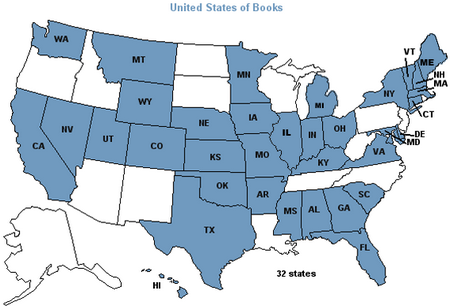 Maud Martha
Maud Martha
Author: Serena M. Agusto-Cox at Savvy Verse & Wit
For Illinois, Entertainment Weekly says, “Sure you can always go with Saul Bellow’s Chicago, but if you’re looking for another view of the windy city, pick up this challenging, essential look at urban black life, with all its beauty and pain.”
Maud Martha by Gwendolyn Brooks is her only novel, and despite being familiar with her poetry for a long time, I’ve never read it. Maud Martha is darker than her sister, and this is a shadow that follows her throughout the novel until she eventually learns that it is not about her outward appearance but the well of strength she has inside. As a child, she looks at the world around her and finds the beauty everywhere, like the dandelions she calls “yellow jewels for everyday.” (pg. 2) Maud is very observant, even as she enjoys every moment, she does note that things are not as merry as others make them seem. In her own family, she notes that everyone is “enslaved” by her sister’s beauty (Helen), but Maud is never bitter because she knows that they cannot help it.
Like many, New York City becomes a symbol of dreams and greater things, but like many symbols, they can be tarnished. Maud meets Paul, and she knows that he could have a prettier, lighter woman as his wife. Even as he marries her, she does not delude herself. Leaving her mother’s home for her own with her husband, Maud discovers that her dreams are much different.
“But she was learning to love moments. To love moments for themselves.” (pg. 78)
Brooks’ style is very different from the traditional novelist, where things happen but not necessarily on the page before the reader. She leaves a great many plot points unobserved, while at the same time, enabling the reader to hear directly from Maud. Her observations, her thoughts … providing readers with an inside look at how life of an urban black woman truly was. Through these observations, Brooks provides a window into the racial divide within even the black community, as well as how tough it was during the depression and the beginning of WWII. At the same time, Maud has opportunities to work outside the home, and these moments provide her with insight into how her husband is treated in the workplace.
“When they sat, their heights were equal, for his length was in the legs. But he thought he was looking down at her, and she was very willing to concede that that was what he was doing, for the immediate effect of the look was to make her sit straight as a stick.” (pg. 131)
Maud Martha by Gwendolyn Brooks paints a stark picture of urban life within the black community, the differences between how the community perceived the use of the n-word and how it was perceived by whites, and the plight of women in the community. Maud says, “What was unreal to you, you could deal with violently,” and isn’t that true of all of us. What is real to us is harder to deal with head on, but we must push aside our fears. “On the whole, she felt, life was more comedy than tragedy.” (pg. 165) Maud is a pillar of inner strength from whom other women could take lessons.
RATING: Cinquain
About the Author:
Although she was born in 1917 in Topeka, Kansas–the first child of David and Keziah Brooks–Gwendolyn Brooks is “a Chicagoan.” The family moved to Chicago shortly after her birth, and despite her extensive travels and periods in some of the major universities of the country, she has remained associated with the city’s South Side. What her strong family unit lacked in material wealth was made bearable by the wealth of human capital that resulted from warm interpersonal relationships. When she writes about families that–despite their daily adversities–are not dysfunctional, Gwendolyn Brooks writes from an intimate knowledge reinforced by her own life.



